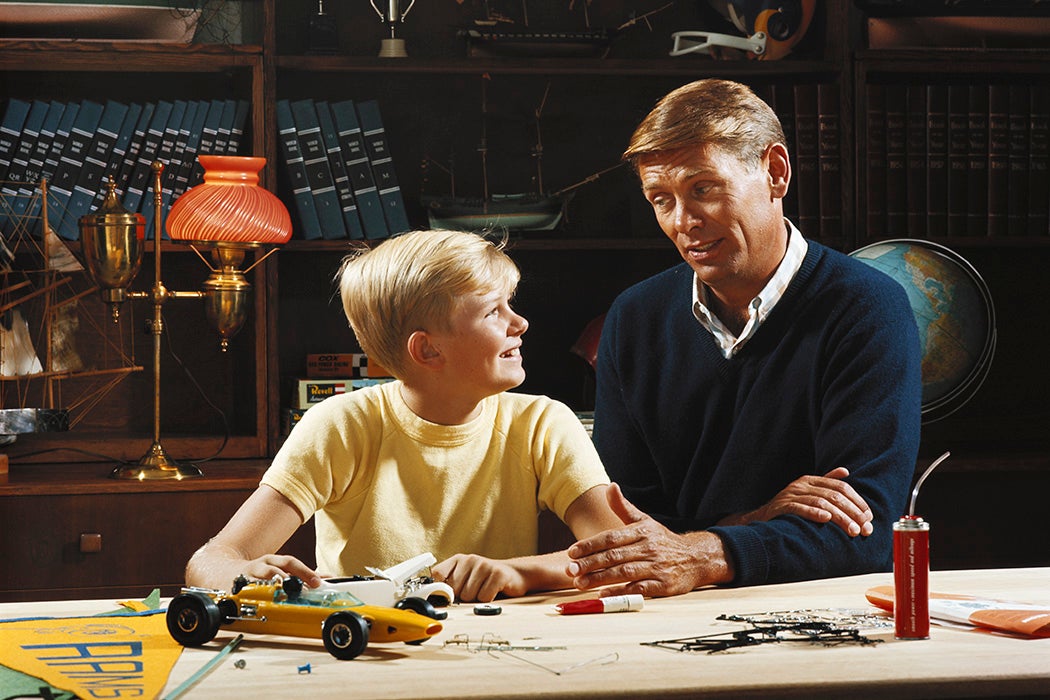As more production tasks in the United States and the United Kingdom were mechanized and automated in the first half of the twentieth century, many workers suddenly found themselves with a lot of time on their hands. And for some, that was a real problem. As Frances N. Ahl notes in article in a 1937 issue of The High School Journal, “hobbies are a means of using surplus energy and time in a manner that at least will not be harmful to society and will be useful to the individual,” cautioning readers to engage their children with a hobby as a “boy or a girl with an outside interest or hobby is less likely to get into trouble than a boy or a girl without one.”
But as engineer Rachel Maines explains, boys and girls were never encouraged to seek out the same hobbies. As she points out, “women and girls were not consistently invited to engage in dangerous, noisy, messy or scientific-exploratory amusements” like boys and men. Photography, chemistry sets, and rocketry were for the boys.
Today, perhaps the most visible way that historical division presents itself is in our homes. Basements, sheds, and workshops found their way into American homes because these hobbies for men were often loud, smelly, intrusive, and had “a well-deserved reputation for stinks and bangs, as well as for outright danger to life and limb.” These hobbies, Maines writes, “co-evolved with twentieth-century living spaces, especially single-family residences for the white middle class.”
Hobbies, as with many leisure activities, often conformed to gender roles. As leisure time expanded, boys and girls found themselves pointed in very different directions. Boys and men were encouraged to head outdoors or to pursue science as a leisure activity while girls and women “were directed into needlework, cooking, and indoor crafts.” Though some outdoor activities were recommended for women, these were generally tame. Women could “ride a horse (side saddle only), play tennis, (modified) cricket, handball […] or, greatly daring, swim. Contrast that to boys who were generally encouraged to play with more experimental things like pea-shooters, cameras obscura, thaumatropes, siphons and hot air balloons,” Maines notes. The High School Journal, in its survey of a few students, demonstrates this: the boys cite hobbies like gun collecting and audio equipment, while the girls name things like knitting and rearranging furniture.
If boys and men were going to play with things that exploded, their pursuits “required segregation from residential spaces,” Maines explains. Loud, messy things need space. By the mid-twentieth century, families, particularly in the US, were seeking out home arrangements that allowed this separation. Automobiles, their tools, and their mess, found a home in the garage, which “offered an opportunity to exile scientific and mechanical hobbies.” New homes were even built with one-and-a-half-car garages to accommodate hobbyists. And as farming became less common as an occupation, former chicken coops and stables were converted into workshops.
Weekly Newsletter
Changes to how we lived also encouraged hobby spaces. As homes became centrally heated in the 1900s, families who used to spend their time in the one heated room—the kitchen—could now spread out, including to the basement. Basements that used to store fuel like coal and wood could be used as leisure spaces. But as Maines points out, these carved out spaces were generally for men and boys, while girls and women, at least according to popular media, were encouraged “to think of their kitchens, sewing rooms and gardens as laboratories and workshops for future productivity as wives and mothers.” We can still see this today, Maines writes, as “upscale versions of these gendered spaces are known as ‘man caves’” and are often featured on home decor shows.
But, as Maines argues, it doesn’t have to be this way. “It might be time to consider the attractions of danger, in dedicated workshop spaces, to all young scientists and engineers and encourage girls to appreciate the stinks and bangs,” she suggests.







